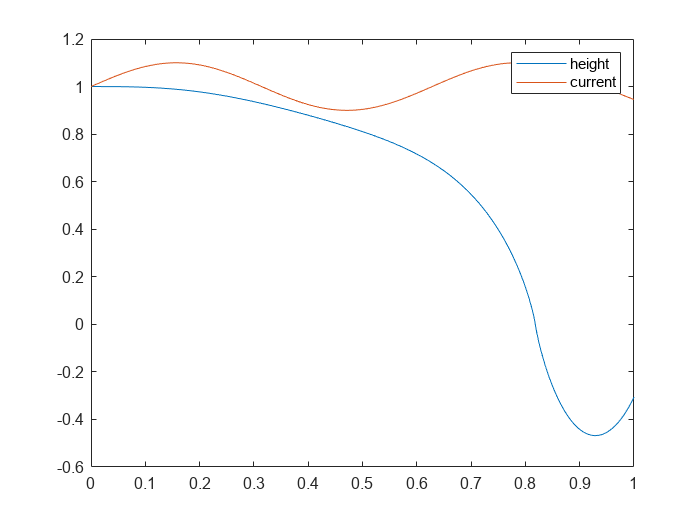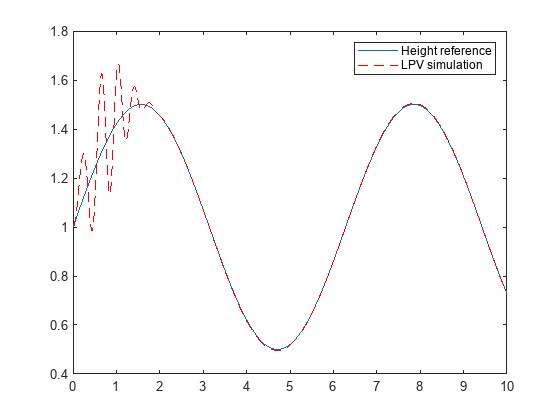lpvss
Description
Use lpvss to represent linear state-space models whose dynamics
vary as a function of time-dependent parameters. Linear parameter-varying
(LPV) models are helpful to obtain low-complexity, locally linear approximations of nonlinear
systems. They can model a much richer class of behaviors than LTI models, especially when the
parameters are allowed to depend on internal states (quasi-LPV). Hence, using
lpvss models lets you efficiently apply design techniques, such as
gain-scheduled control, to nonlinear models.
You can use lpvss to create continuous-time or discrete-time linear
parameter-varying state-space models. In continuous time, an lpvss model is
described by the following state-space equations.
Here, p is a vector of time-dependent exogenous parameters and δ0(t,p), x0(t,p), u0(t,p), and y0(t,p) are varying derivative, state, input, and output offsets, respectively.
In discrete time, an lpvss model is described by the following
state-space equations.
Here, the integer index k counts the number of sampling periods
Ts.
You can use an lpvss object to model:
Linear systems whose coefficients depend on external or environmental parameters. For an example, see Control Design for Spinning Disks.
Nonlinear systems operating near steady-state conditions that change in time and depend on a few physical parameters. For example, see Design and Validate Gain-Scheduled Controller for Nonlinear Aircraft Pitch Dynamics.
Use lpvss to construct LPV models whose dynamics are described by a
MATLAB® function (the data function). Use ssInterpolant to
construct LPV models that interpolate linearized LTI dynamics over a grid of operating
conditions. The lpvss object cannot represent quasi-LPV models consisting of
an LPV model with a scheduling map p(t) =
h(t,x,u), but
you can specify the parameter trajectory as a function of time t, states
x, and inputs u to simulate quasi-LPV models. See
LPV and LTV Models for functions and
operations applicable to lpvss objects.
Creation
Syntax
Description
lpvSys = lpvss(ParamNames,DataFcn)ParamNames specifies a name for
each element of the parameter vector p. DataFcn is
the name or a handle to the data function, the user-defined
MATLAB function that calculates the matrices and offsets for given
(t,p) values (or
(k,p) values in discrete time).
lpvSys = lpvss(ParamNames,DataFcn,ts)ts.
lpvSys = lpvss(ParamNames,DataFcn,ts,tcheck,pcheck)DataFcn at
(tcheck,pcheck) to determine the number of states,
inputs, and outputs. By default, lpvss uses
(tcheck,pcheck) = (0,0).
lpvSys = lpvss(___,Name=Value)
Input Arguments
Properties
Object Functions
Examples
Version History
Introduced in R2023aSee Also
ltvss | getTestValue | setTestValue | sample | ssInterpolant


